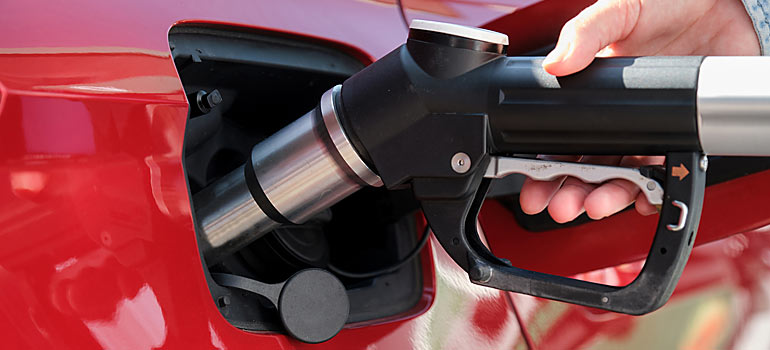How Safe Are Natural Gas Vehicles?
Natural gas is an environmentally clean, plentiful, low-cost, domestically produced fuel that is used in more than 70 million homes and businesses throughout the U.S. and as a transportation fuel for motor vehicles.
Natural gas is a fuel that occurs naturally and requires very little processing before use. Chemically, it normally consists of over 90% methane with smaller amounts of ethane, propane, butane, carbon dioxide and other trace gases. Pure methane has a very high octane rating (120-130) and the high methane content of natural gas in turn gives natural gas this same attribute. The low carbon content of methane also allows for the potential of low carbon and green house gas emissions.
As with all fuels, natural gas can be used safely if the unique properties of the fuel are understood and common sense procedures are followed. In fact, natural gas has safety advantages compared to gasoline and diesel: it is non-toxic, and has no potential for ground or water contamination in the event of a fuel release. Natural gas is lighter than air and dissipates rapidly when released. An odorant is added to provide a distinctive and intentionally disagreeable small that is easy to recognize: similar to rotten eggs.
Natural gas-powered vehicles are designed and built to be safe both in normal operation and in accidents. New OEM natural gas vehicles are subject to the same federal government crash tests as other vehicles.
Data collected over time has demonstrated natural gas vehicles to be safe in actual operation. Based on a survey of 8.331 natural gas utility, school, municipal and business fleet vehicles (NGVs) that traveled 178 million miles:
- The NGV fleet vehicle injury rate was 37% lower than the gasoline fleet vehicle rate.
- There were no fatalities compared with 1.28 deaths per 100 million miles for gasoline fleet vehicles.
Natural gas vehicles were first commercialized after World War II in Italy. There are now over 12 million in use worldwide. Natural gas vehicles have been in use in the U.S. since the early 1970s,with over 200,000 in use today. Yet there has been only one fatality in the U.S. involving a NGV in all that time, and it was attributed to human error.
Even more important than statistics is the confidence that natural gas vehicle users feel. One in five new transit buses are natural gas-powered with about 12,000 transit buses and community shuttles in service. Police in Rocky Hill, Connecticut, report “the safety record of the (NGV) cars has been excellent.” The Department of Energy states that “after rigorous testing … (the King County, Washington police) found their … (Compressed Natural Gas) cars to be as safe and reliable as conventional vehicles.”
In summary, technical data, appropriate safety regulations and years of experience show natural gas vehicles to be as safe as, or safer than, conventionally fueled vehicles.
To learn more please visit the Clean Vehicle Education Foundation web page at www.cleanvehicle.org.



